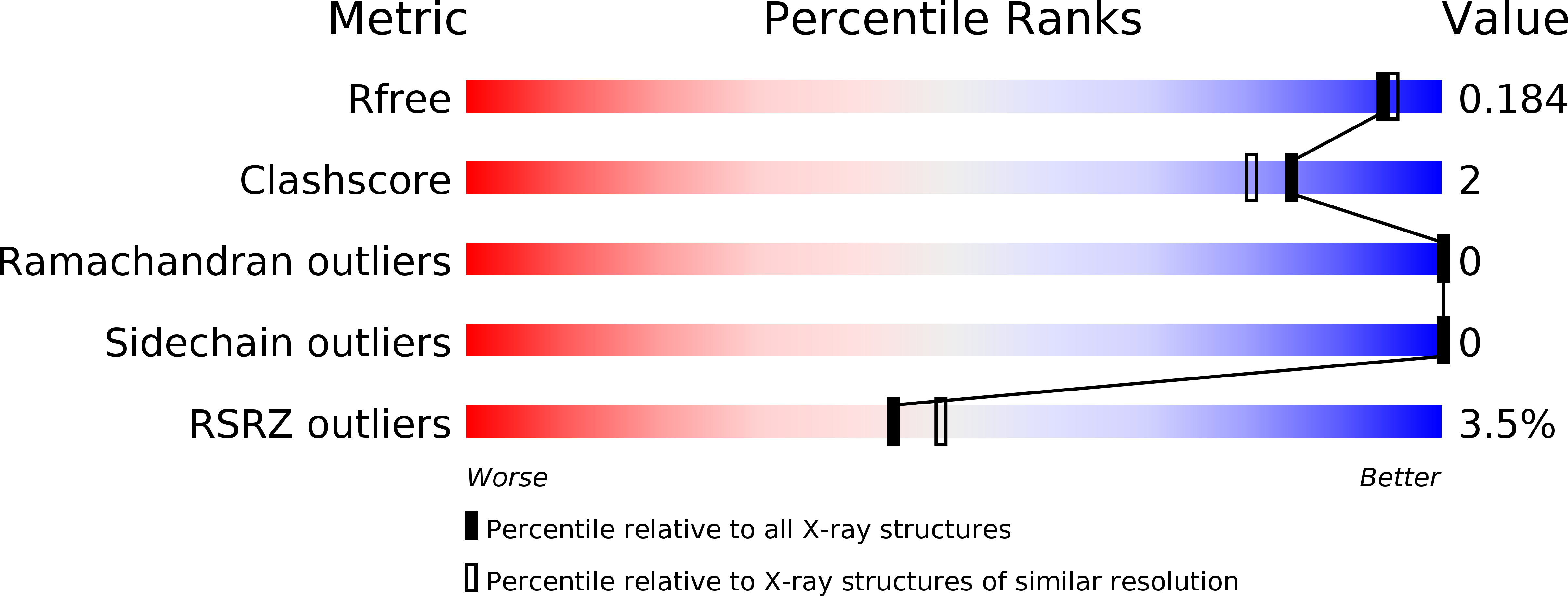Divergent Modes of Glycan Recognition by a New Family of Carbohydrate-Binding Modules
Gregg, K., Finn, R., Abbott, D.W., Boraston, A.B.(2008) J Biological Chem 283: 12604
- PubMed: 18292090
- DOI: https://doi.org/10.1074/jbc.M709865200
- Primary Citation of Related Structures:
2VMG, 2VMH, 2VMI, 2VNG, 2VNO, 2VNR - PubMed Abstract:
The genomes of myonecrotic Clostridium perfringens isolates contain genes encoding a large and fascinating array of highly modular glycoside hydrolase enzymes. Although the catalytic activities of many of these enzymes are somewhat predictable based on their amino acid sequences, the functions of their abundant ancillary modules are not and remain poorly studied. Here, we present the structural and functional analysis of a new family of ancillary carbohydrate-binding modules (CBMs), CBM51, which was previously annotated in data bases as the novel putative CBM domain. The high resolution crystal structures of two CBM51 members, GH95CBM51 and GH98CBM51, from a putative family 95 alpha-fucosidase and from a family 98 blood group A/B antigen-specific endo-beta-galactosidase, respectively, showed them to have highly similar beta-sandwich folds. However, GH95CBM51 was shown by glycan microarray screening, isothermal titration calorimetry, and x-ray crystallography to bind galactose residues, whereas the same analyses of GH98CBM51 revealed specificity for the blood group A/B antigens through non-conserved interactions. Overall, this work identifies a new family of CBMs with many members having apparent specificity for eukaryotic glycans, in keeping with the glycan-rich environment C. perfringens would experience in its host. However, a wider bioinformatic analysis of this CBM family also indicated a large number of members in non-pathogenic environmental bacteria, suggesting a role in the recognition of environmental glycans.
Organizational Affiliation:
Department of Biochemistry and Microbiology, University of Victoria, Victoria, British Columbia V8W 3P6, Canada.




















